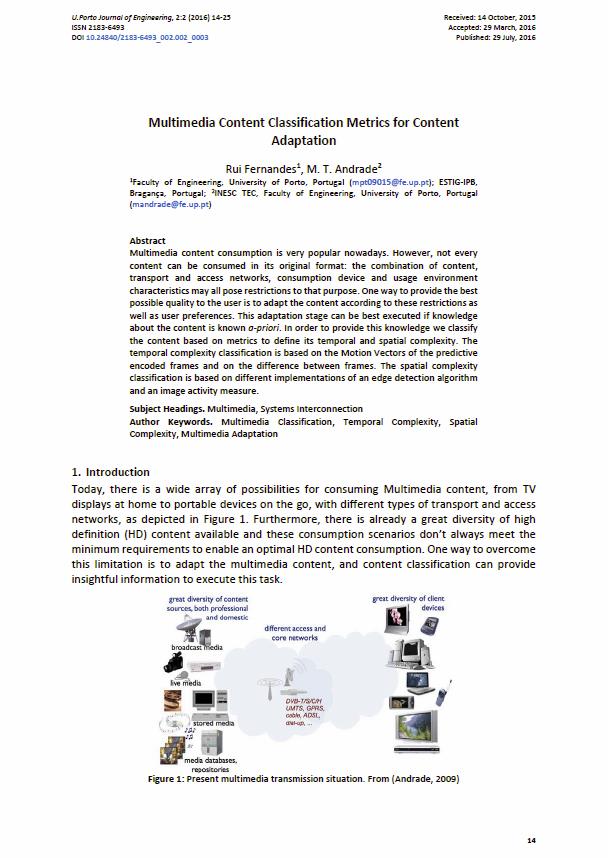Multimedia Content Classification Metrics for Content Adaptation
Main Article Content
Abstract
Multimedia content consumption is very popular nowadays. However, not every content can be consumed in its original format: the combination of content, transport and access networks, consumption device and usage environment characteristics may all pose restrictions to that purpose. One way to provide the best possible quality to the user is to adapt the content according to these restrictions as well as user preferences. This adaptation stage can be best executed if knowledge about the content is known a-priori. In order to provide this knowledge we classify the content based on metrics to define its temporal and spatial complexity. The temporal complexity classification is based on the Motion Vectors of the predictive encoded frames and on the difference between frames. The spatial complexity classification is based on different implementations of an edge detection algorithm and an image activity measure.
Downloads
Article Details
Authors who publish with this journal agree to the following terms:
- Authors retain copyright and grant the journal right of first publication with the work simultaneously licensed under a Creative Commons Attribution License that allows others to share the work with an acknowledgement of the work's authorship and initial publication in this journal.
- Authors grant the journal the rights to provide the article in all forms and media so the article can be used on the latest technology even after publication and ensure its long-term preservation.
- Authors are able to enter into separate, additional contractual arrangements for the non-exclusive distribution of the journal's published version of the work (e.g., post it to an institutional repository or publish it in a book), with an acknowledgement of its initial publication in this journal.
- Authors are permitted and encouraged to post their work online (e.g., in institutional repositories or on their website) prior to and during the submission process, as it can lead to productive exchanges, as well as earlier and greater citation of published work (See The Effect of Open Access).

